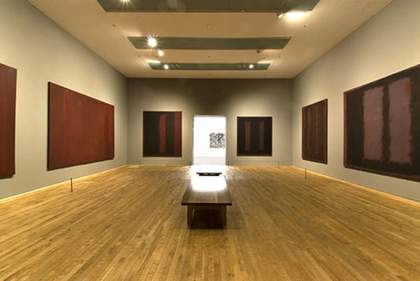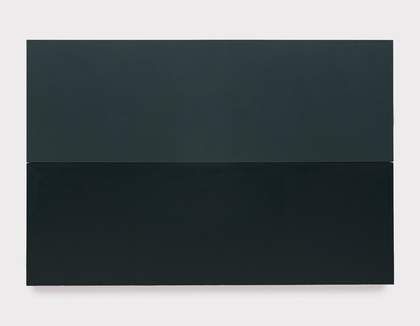Michelangelo achieved just the kind of feeling I’m after – he makes the viewers feel that they are trapped in a room where all the doors and windows are bricked up, so that all they can do is butt their heads forever against the wall.
Mark Rothko in Red
The Rothko Room is one of the most well-known displays in Tate Modern. However, these huge abstract paintings by Mark Rothko were never originally meant for a museum.
In the late 1950s, Rothko was commissioned to paint a series of murals for the fashionable Four Seasons restaurant, in the Seagram Building on Park Avenue, New York. This was the most prestigious public commission that had ever been awarded to an abstract expressionist painter. However, Rothko came to recognise that the worldly setting of a restaurant would not be the ideal location for such a work, and withdrew from the commission. A decade later, Rothko presented nine paintings from the series to the Tate Gallery, where they have been on display ever since.
Rothko’s work on the Seagram murals is the subject of John Logan’s play Red. Directed by Michael Grandage, it premiered at London’s Donmar Warehouse in 2009, starring Alfred Molina as Rothko and Eddie Redmayne as his assistant. It transferred to Broadway where it won 6 Tony Awards. A new production opened at Wyndham's Theatre in London’s West End in 2018, with Alfred Enoch as Ken and Alfred Molina returning to the role of Rothko.
Watch Frances Morris, Director of Tate Modern, take the director and cast of Red on a tour of the Rothko Room, exploring the story behind the paintings and discussing what it was like to bring Rothko’s painting process to the stage.



